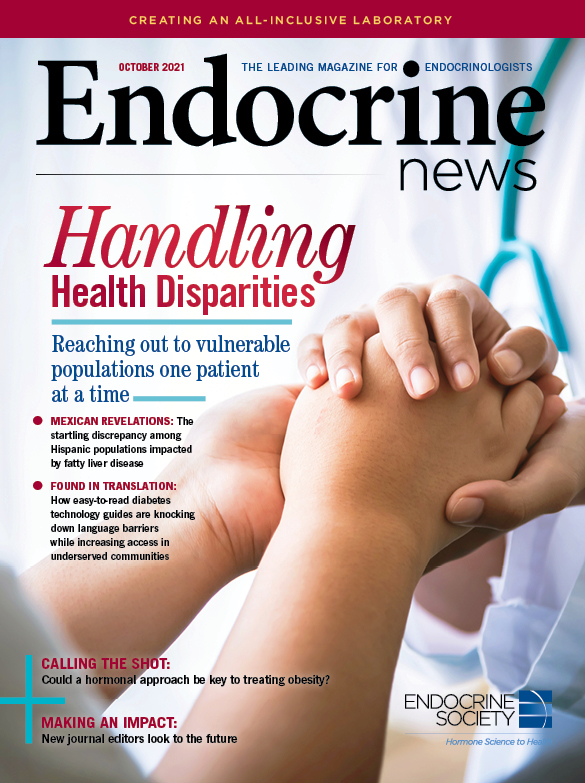
This month, Endocrine News takes a closer look at health disparities and some of the hurdles that clinicians face when treating these underserved populations. One of the biggest hurdles — whether in urban or rural areas — is the language barrier. When clinicians can’t adequately communicate with their patients, much-needed information can literally get lost in translation or, more accurately, does not get translated at all.
To address these language barriers, Anne Peters, MD, professor of medicine, Keck School of Medicine of USC; director, USC Clinical Diabetes Programs, Los Angeles, Calif., and her team at the USC Westside Center for Diabetes worked with the Clear Language Group to create a series of low-literacy English and Spanish language educational guides designed to aid patients from underserved populations. Eric Seaborg writes about these guides (“Found in Translation: New Diabetes Guides Increase Accessibility for All”) spearheaded by the Specialized Technology Education for Pumps & Pens in Underserved Populations with Diabetes (STEPP-UP) Project and the Specialized Technology Education for Patients and Providers — Tools for Continuous Glucose Monitoring (STEPP To CGM).
Rather than simply creating brochures, Peters and her team created detailed, multi-page booklets on diabetes self-care and dealing with new technology, which feature images that more closely resemble the very population to which these guides are targeted. “The historical issue is that everybody has always been white in all the guides,” Peters says. “I went on a campaign a number of years ago to try to increase the diversity quotients of what the companies were doing, and now if you look at the Dexcom, Medtronic, and Tandem [information], they actually have people of color using the devices, which is a good step, but the information is still at a much higher level.”
Peters tells Seaborg that these guides have made a difference in the lives of these patients because they helped reduce diabetes stress and depression while increasing knowledge. “We did a whole bunch of really good things in terms of making people feel better,” she says. “But even in conjunction with a really good diabetes educator, these tools didn’t improve patients’ hemoglobin A1c levels, time in range, or episodes of hypoglycemia. They did reduce diabetic ketoacidosis admissions into the hospital or emergency department. So, we did really help.”
Senior editor Derek Bagley looks at another health disparity phenomenon that might have come as somewhat of a surprise to researchers studying the effects of fatty liver disease on Hispanic populations. While the rates of this condition have been known to be higher in the overall Hispanic population for a number of years, new research shows that it is disproportionately higher in people of Mexican descent. In “Mexican Revelation: The Health Disparities of Fatty Liver Disease in Hispanics,” Bagley speaks with Theodore Friedman, MD, PhD, chief of the Division of Endocrinology, Metabolism and Molecular Medicine at Charles R. Drew University of Medicine and Science in Los Angeles, Calif., who, along with his team of researchers, authored a paper in Hepatology Communications that found that hepatic steatosis is higher in Mexican Americans, but not in non-Mexican American Hispanics, a conclusion the researchers hope not only helps bring awareness to clinician endocrinologists who see Hispanic patients, but also might lead to understanding the exact factors that cause fatty liver disease. “This is an important finding as it shows that Hispanics are not a monolith,” Friedman says, “and that conditions like hepatic steatosis are more common in specific subgroups of Hispanics, such as Mexican Americans and not in other Hispanics.”
Understanding both from a basic and sincere interpersonal perspective as well as from a larger, big picture view is key to treating various, often multi-faceted populations. Such a comprehensive understanding of underlying factors is an important first step to offering the best care possible one patient at a time.
If you would like to share your own stories of how you’ve dealt with treating underserved populations or if you’ve come across solutions to addressing the ongoing issue of health disparities, please feel free to share your experiences with us. Don’t hesitate to contact me at: [email protected].
And don’t forget: you can download the entire October issue here, if you can’t wait for it to arrive in your mailbox.

